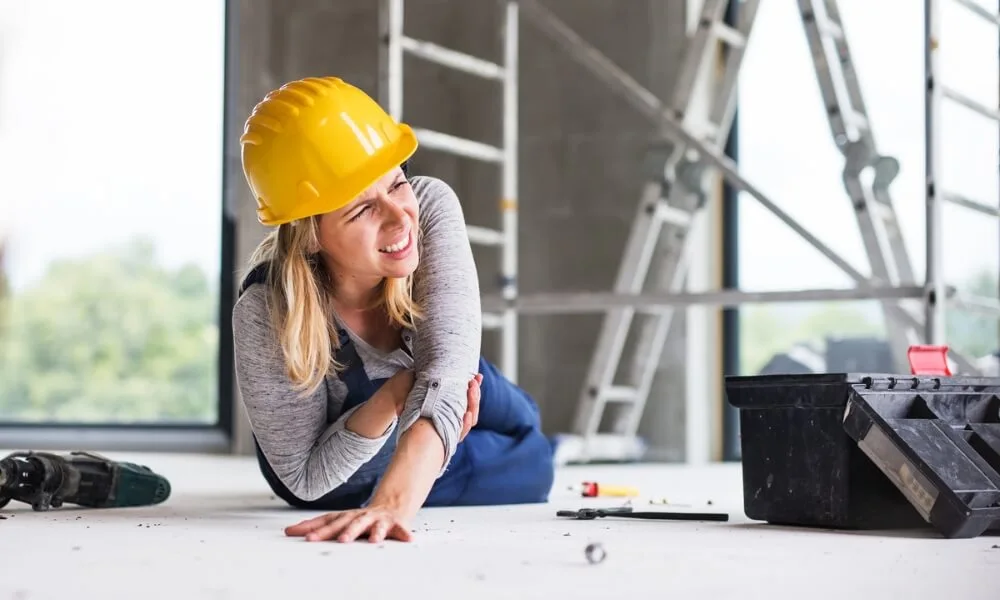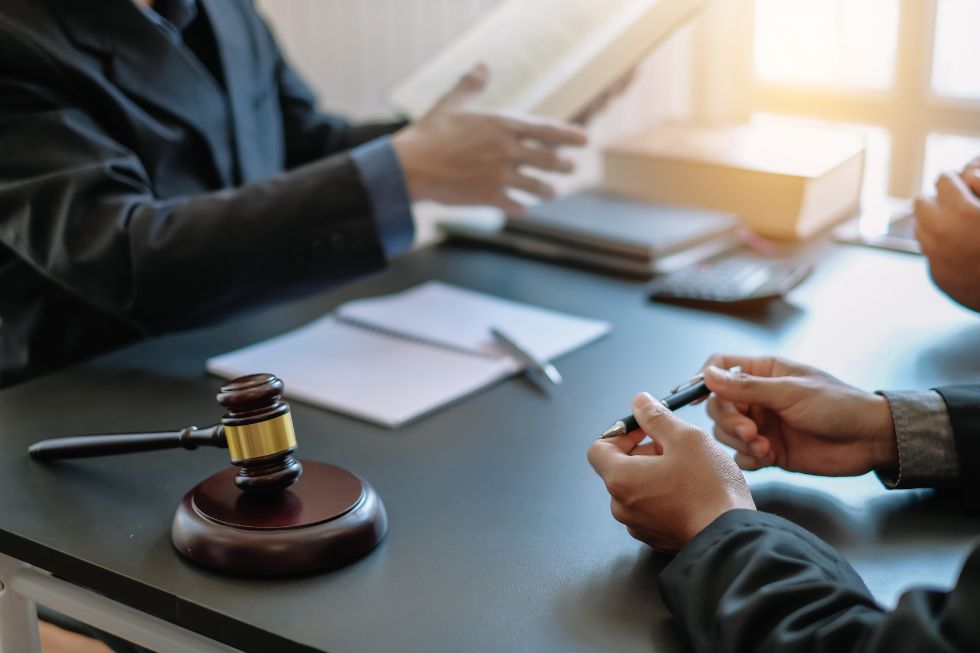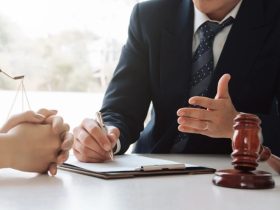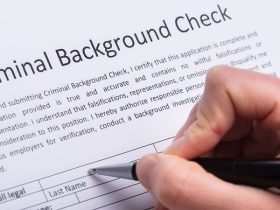Construction sites in NYC are bustling hubs of activity, but they also come with significant risks. Among the most serious injuries workers face are concussions, often caused by falls, falling objects, or equipment accidents. These injuries can have long-lasting effects, making it crucial to understand the legal options available.
For 2025, navigating concussion claims has become more complex as laws continue to evolve. Workers and their families need clear guidance to ensure they’re protected and fairly compensated. Understanding the legal landscape can make all the difference in securing justice after a construction accident.
Understanding the Severity of Concussions from Construction Accidents
Concussions sustained on construction sites can result in significant physical and cognitive impairments. These injuries often stem from head trauma caused by falls, falling objects, or equipment mishaps. Symptoms might include memory loss, persistent headaches, dizziness, and even long-term brain function issues, depending on the severity of the injury.
Traumatic brain injuries (TBIs) from construction site accidents are classified as mild, moderate, or severe based on the Glasgow Coma Scale (GCS) score. A mild concussion, though often underestimated, can still disrupt daily life and work capabilities, particularly in high-risk industries like construction. Severe cases may lead to permanent disability or require ongoing medical care.
NYC construction workers encountering concussions frequently face challenges in returning to work, particularly if symptoms linger. Establishing legal responsibility requires careful assessment of the incident’s cause, such as unsafe site conditions, inadequate safety measures, or negligence by a third party. A knowledgeable NYC concussion injury lawyer, such as Oresky & Associates, can assist in determining liability and advocating for the injured worker’s rights.
Understanding long-term effects is critical when evaluating damages for a concussion claim. Chronic traumatic encephalopathy (CTE), post-concussion syndrome (PCS), and memory deficiencies represent some potential post-accident complications. The inclusion of medical experts, diagnostic reports, and detailed symptom tracking strengthens claims by providing a comprehensive view of injury severity.
How to File a Compensation Claim for Concussion Injuries
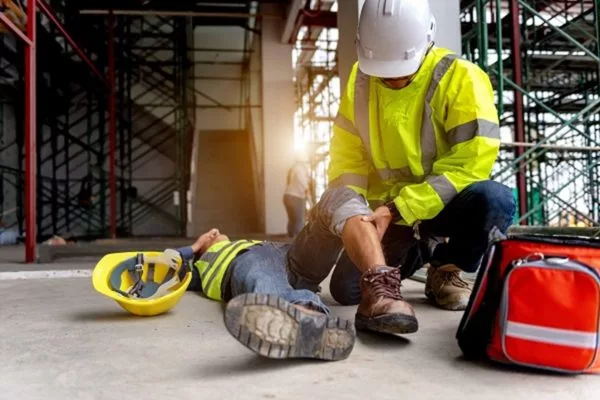
Filing a compensation claim for concussion injuries involves several critical steps to ensure legal protection and fair recovery. Construction workers injured on the job should follow precise procedures to build a strong case.
- Seek Immediate Medical Attention
Document all symptoms through professional medical evaluations. This provides evidence linking the concussion to the construction accident, ensuring no delays compromise the claim’s validity. - Report the Incident to Your Employer
Notify the employer or site supervisor promptly. Include details like the accident’s location, time, and cause for compliance with workplace injury reporting requirements. Failure to report promptly may weaken the claim. - Gather Evidence from the Accident Scene
Collect photos of the site, unsafe conditions, or faulty equipment. Obtain witness statements to support your account of the incident, as they strengthen liability arguments. - Consult a NYC Concussion Injury Lawyer
Engage a legal professional experienced in construction accidents to evaluate your case. Firms like Oresky & Associates can assist in navigating New York’s complex labor laws and filing deadlines. - File a Workers’ Compensation Claim
Submit the necessary forms with detailed injury information, ensuring proper documentation of medical bills, wage loss, and treatment plans to claim benefits successfully. - Consider Filing a Personal Injury Lawsuit
If third-party negligence contributed to the accident, pursue additional compensation through a personal injury lawsuit. Consult your lawyer to determine eligibility under New York’s laws.
Timely action and thorough documentation help maximize compensation for concussion-related damages, including medical expenses, lost earnings, and long-term rehabilitation needs.
The Role of Witness Testimonies in Building a Strong Case
Witness testimonies strengthen concussion claims by providing critical firsthand accounts of construction accidents. These statements often detail unsafe site conditions, equipment malfunctions, or violations of safety protocols that may have caused or contributed to the injury. Their observations support claims of negligence, which is essential for establishing liability in NYC construction accident cases.
Accurate witness accounts prove pivotal when evidence like video footage or photographs is unavailable. Workers present during the incident often recall specific details, including the sequence of events and environmental hazards, that provide context to the claim. For example, a coworker may describe seeing a falling object strike the injured worker, confirming the accident’s cause.
Legal professionals, such as Oresky & Associates, use witness testimonies to validate a victim’s account, aligning statements with medical reports and other evidence. Thorough cross-verification ensures consistency and credibility, which strengthens the overall claim. Including these testimonies showcases the conditions and circumstances leading to a concussion injury, further emphasizing employer or third-party negligence.
Securing statements promptly preserves their accuracy, as memories fade over time. Witness information, such as contact details and statements recorded by legal representatives soon after the accident, plays a key role in building a strong foundation for concussion claims.
Common Challenges in NYC Construction Injury Lawsuits
Navigating legal claims for construction injuries in NYC presents several obstacles, particularly in concussion cases. These challenges often complicate the process of securing fair compensation for injured workers.
Proving Negligence
Establishing negligence is a significant hurdle in construction injury cases. Injured workers must demonstrate that the responsible party, such as a contractor or equipment manufacturer, failed to uphold safety standards. Without clear evidence of unsafe conditions, negligence claims weaken.
Managing Extensive Documentation
Effective injury claims require comprehensive documentation. Medical reports, incident logs, witness statements, and photographs must all align to support the claim. Missing or inconsistent records complicate the legal case and delay compensation.
Employer and Insurer Pushback
Employers and insurance companies frequently contest injury claims to minimize payouts. They might downplay the severity of the injury or argue the worker’s actions contributed to the accident. Overcoming these defenses requires persuasive legal representation and airtight evidence.
Complex Liability Determination
Construction sites involve multiple parties, from property owners to subcontractors. Determining liability among these entities can be complex, especially when each denies responsibility. Legal professionals, including an NYC Concussion Injury Lawyer, play a key role in tracing accountability to the appropriate party.
Delays in Recovery
Concussions and TBIs often require lengthy recovery periods, impacting workers’ ability to proceed with legal claims. Delayed medical diagnoses or evolving symptoms can weaken cases if they can’t be firmly linked to the original construction accident.
Statutory Time Limits
Strict deadlines apply to filing claims for construction injuries. Workers’ compensation claims and personal injury lawsuits must comply with New York’s statutes of limitations. Missing these deadlines can forfeit a victim’s right to recover damages.
Legal expertise from professionals familiar with NYC construction injury cases, such as Oresky & Associates or another qualified NYC concussion injury lawyer, can help injured workers navigate these challenges effectively.
Key Evidence Needed for Concussion Injury Claims
Clear, well-documented evidence strengthens concussion injury claims in NYC construction cases. Establishing the severity of the injury, the cause of the accident, and the responsible parties is essential for successful legal outcomes.
-
Medical Records
Comprehensive medical documentation confirms the diagnosis and severity of the concussion. These records should include emergency room reports, imaging results (CT or MRI scans), and notes from neurologists or concussion specialists. Detailed records link symptoms to the construction accident, providing critical evidence.
-
Accident Reports
Official reports filed with the employer or OSHA document the time, date, and circumstances of the construction site accident. These reports identify potential safety violations or negligence, vital for liability claims. The report should include the worker’s initial account of events.
-
Witness Statements
Signed statements from coworkers or bystanders offer firsthand descriptions of the accident. For example, witnesses can verify unsafe conditions, falling objects, or safety protocol breaches contributing to the concussion injury. Prompt collection of these accounts ensures accuracy and supports consistency with other evidence.
-
Photographs and Videos
Visual evidence from the accident scene highlights key factors, such as unsafe scaffolding, inadequate safety equipment, or debris. Video footage from security cameras or devices can validate victims’ claims and clarify how the accident occurred.
-
Symptom Diaries
Journals documenting symptoms like headaches, nausea, or memory issues demonstrate the injury’s impact over time. A detailed diary provides insight into pain levels, cognitive impairments, and reduced work capacity, emphasizing non-economic damages in the claim.
-
Legal Expert Assessment
An NYC concussion injury lawyer, such as Oresky & Associates, reviews all evidence to identify key liability factors. Their expertise ensures that documentation aligns with legal standards, reinforcing the claim. They also analyze gaps in evidence to help strengthen the victim’s case.
-
Employment Records
Pay stubs or employer correspondence illustrate the income lost due to the injury. These records support claims for lost wages and reduced earning capacity, demonstrating the financial impact of the concussion.
-
Safety Protocol Records
Inspection reports, safety logs, or training records pinpoint lapses in adherence to industry regulations. These documents address negligence and clarify whether proper safety measures were implemented before the accident.
Steps to Prove Employer Negligence in Construction Accidents
- Establish Duty of Care
Demonstrating that the employer owed a duty of care to maintain a safe work environment is essential. OSHA regulations mandate that construction site employers follow specific safety standards, including providing protective equipment and proper training. Failure to comply establishes negligence. - Document Breach of Duty
Showing that the employer violated safety protocols is critical. Collect evidence such as internal reports, inspection records, and photographs of unsafe site conditions. Statements from coworkers about insufficient training or ignored hazards reinforce the breach of duty. - Connect Negligence to Injury
Proving causation between hazardous conditions and the worker’s concussion is necessary. Medical records linking the injury to the accident, combined with incident reports and expert testimony, demonstrate how the employer’s actions directly caused harm. - Demonstrate Damages
Quantifying concussion-related damages strengthens the case. Include medical bills, therapy costs, lost income, and ongoing rehabilitation needs. For significant injuries, expert evaluations highlight potential long-term impacts, such as post-concussion syndrome. - Gather Witness Testimonies
Statements from on-site witnesses provide credibility to negligence claims. Witness accounts about site hazards, lack of safety measures, or policy violations support the injured worker’s claims. Promptly recorded statements ensure accuracy. - Engage a Legal Expert
Retaining an NYC concussion injury lawyer, such as Oresky & Associates, improves case outcomes. Legal professionals analyze evidence, negotiate with insurers, and ensure compliance with NYC regulations and filing deadlines. Their expertise is critical in securing fair compensation.
Working with Legal Experts to Secure Fair Compensation
Legal representation is critical in navigating the complexities of construction accident concussion claims. Skilled attorneys, such as an NYC concussion injury lawyer, analyze the circumstances of the injury, determine liability, and advocate for maximum compensation for victims.
Analyzing Liability
Legal experts investigate factors like employer negligence, unsafe site conditions, or third-party involvement. Establishing liability requires evidence linking the accident directly to responsible parties, such as subcontractors or equipment manufacturers.
Negotiating with Insurers
Insurers often challenge the validity of claims or undervalue injuries. Attorneys familiar with NYC construction accidents counter these tactics, presenting comprehensive evidence—including medical records and witness statements—to substantiate demands for fair compensation.
Adhering to Deadlines
Strict deadlines apply under New York statutes for filing workers’ compensation claims or personal injury lawsuits. Legal professionals ensure timely submission of all documentation to preserve victims’ rights to recover damages.
Including Additional Damages
Beyond medical expenses, expert lawyers account for long-term impacts like lost earning capacity, rehabilitation costs, and emotional distress. These calculations strengthen claims, ensuring fair redress for victims’ hardships.
Oresky & Associates or any experienced legal team with NYC-specific expertise can play a vital role in achieving favorable outcomes for injured workers. This tailored guidance helps victims navigate the legal process efficiently and effectively.
Updates to NYC Construction Laws Impacting Injury Claims
Navigating construction accident concussion claims in NYC requires a thorough understanding of evolving laws and legal processes. Changes to regulations by 2025 aim to enhance worker protections and clarify compensation pathways, making it essential for injured workers to stay informed.
Legal professionals play a vital role in ensuring victims receive the justice and compensation they deserve. By addressing challenges like proving negligence, gathering evidence, and meeting deadlines, skilled attorneys help injured workers overcome obstacles and focus on recovery.
With the complexities of construction site injuries, timely action and expert guidance are key to achieving fair outcomes.

